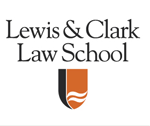Animal Law Review
First Page
311
Abstract
Reviewing preliminary injunction motions under the Endangered Species Act (ESA), most district courts evaluate “irreparable harm” through one of two lines of analysis. One line, promoted by property rights interest groups, reasons that individual mortalities might not constitute irreparable harm if they do not impact survival of the species. In contrast to this “species-level harm” analysis, another approach argues that “individual-level harm” suffices because it is irreparable to the animal. The recent First Circuit opinion in Animal Welfare Institute v. Martin attempts, but ultimately fails, to bridge the divide over which level of analysis to apply for irreparable harm under the ESA. Rather than pick a side about the appropriate level of animal harm analysis, this Article approaches the question of irreparable harm from a fresh angle. Drawing on procedural and remedial principles from across the ideological spectrum, this Article argues that analyzing the scope of animal harm is a false choice. Instead, courts should look to the human plaintiff to define irreparable harm: Will the defendant’s actions harm the plaintiff’s interest? Focusing on irreparable harm to the plaintiff cleans up a messy jurisprudence: it fits the plain text of the traditional injunction standard, fulfills the purpose of the ESA, and synchronizes with the standing analysis. This Article investigates the consequences of moving from an animal harm to a human harm analysis for ESA preliminary injunctions, and identifies the likely challenges for both institutional defendants and wildlife advocates.
Recommended Citation
Danny Lutz,
Harming the Tinkerer: The Case for Aligning Standing and Preliminary Injunction Analysis in the Endangered Species Act,
20
Animal L. Rev.
311
(2014).
Available at:
https://lawcommons.lclark.edu/alr/vol20/iss2/4

